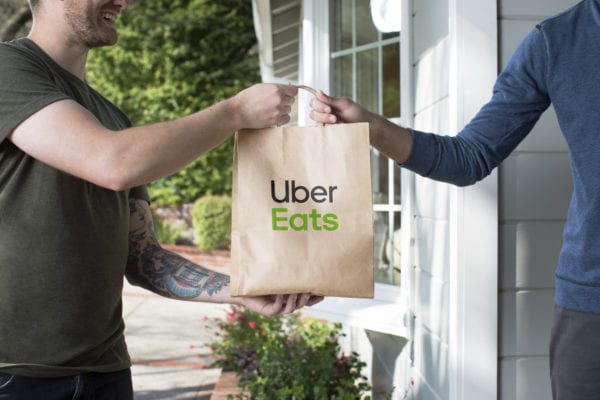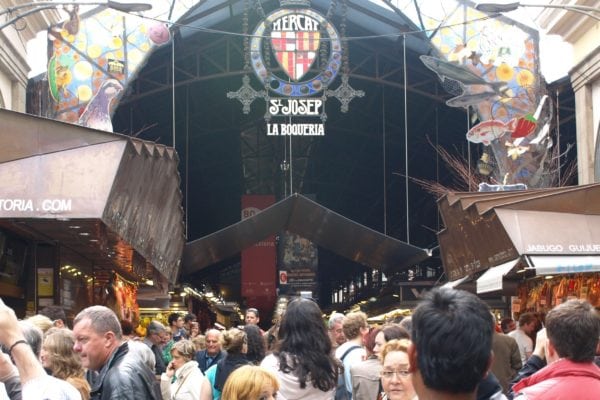TRENDY
Tracing the History of Food Trends
Long before bacon took over the internet and kale became a huge thing on Instagram, plenty of other food trends swept the country. The New York Times ran a great piece today about food trends and their historical relevance, powered by something called the Times Chronicle tool that “visualizes language usage in New York Times news coverage throughout its history.” That’s a mouthful, but basically this tool can track instances of certain words and phrases (in this case, ingredients) over time.
They call it the “fried calamari index,” citing the fried food’s rise to popularity in the ‘80s and ‘90s. (It was mentioned a total of 56 times in 1996, which is kind of a lot when you think about it — over once a week.) The author displays similar popularity graphs of sun-dried tomatoes, hummus, goat cheese, and quiche. We need to bring back quiche in a big way, btw.
Worth noting: “The pattern looks a little different, however, with many of the foods that have become trendy in the last decade. They now appear to become more popular faster, and then to fade from glory.” This is, I believe, because of the internet and social networking and FOMO and the fact that trends now travel faster anyway. (See: my piece about the internet and the popularity of kale from last year. Kale was mentioned in theTimes 264 times in 2013. Two-hundred-sixty-four times.)
The piece is great and interesting and definitely worth a read. (Quiche in 2015!)

ON-DEMAND
Chefs Direct to You
Yay for two awesome companies pairing up to do something fun. In this case: Uber + Kitchensurfing, who last weekend delivered chefs on demand to parties in the Hamptons. Smart. Ten different chefs prepared meals for about 200 people at the drop of a pin. While the promotion itself is a little gimmicky, it’s a perfect example of trends that are shaping the future of the way we eat. First, there’s the what-you-want-when-you-want thing, the push-of-a-button market that Uber exemplifies so well. Then there’s the trend toward personalized experiences — in this case, personalized meals. Finally, there’s the way that technology creates a marketplace for these skilled professionals — when you wrap it up and put a bow on it, it’s a great idea. The photos look fun, too. Nice job, guys.
Sort-of similarly, San Francisco-based meal delivery service Sprig introduced a guest chef series where accomplished chefs will take Sprig’s creative helm for the evening — for one night only. (This has been around since June, sorry I missed it, Sprig!) Chefs create the meal, customers purchase it for $10, Sprig delivers it to your door and proceeds go to charity. Next up: Bento Boxes from three-Michelin-star Chef Kyle Connaughton(his meals will sell for $12, still a great deal.) What you want when you want it, on demand and delicious. Sounds good to me.
TKTS
SF’s Michael Bauer on Ticketing
In a post this week, SF Chronicle restaurant critic Michael Bauer addresses the trendy issue of restaurant ticketing and the pay-for-reservations model. To be honest, the whole piece feels like a lackadaisical response to the idea, but the fact that the ticketing model is getting mainstream coverage is, in itself, notable. But his coverage falls short for a few reasons.
He rides the dinner-as-theater comparison pretty hard, comparing trendy restaurants to limited-run shows but saying that long-established places (like SF’s Tadich Grill, around since 1849) have less of a use for the ticketing model. (He’s right.) But the practice doesn’t have to be universally accepted at all restaurants to be valid.
Then: “I could also see more restaurants offering “value pricing,” which Chez Panisse has done for years.” Berkeley’s Chez Panisse offers a fixed-price menu that’s more expensive on the weekends, less expensive (though smaller) on a Monday. The only real difference here is that Chez Panisse accepts reservations (and the associated cancellations) instead of requiring payment up front.
Finally: “Much of what’s being reported probably wouldn’t work for the smaller neighborhood restaurants where people come mostly to eat rather than to have an experience.” You don’t say. The pay-for-reservations/ticketing shift is solving problems experienced by some restaurants, but not all of them. These sorts of technologies, though, allow for customization and creative solutions. They reach consumers where they spend time — online and on mobile devices. Is this some sort of new-fangled technology that’s about to ruin the dining experience completely? I don’t think so. Nor will it turn an industry on its head. But if a spot benefits from using a technology that makes them a better, more efficient, more cost-effective and overall better-run restaurant… what’s the big deal?
PHONES
What Servers Think of Phones in Restaurants
Remember that maybe, possibly, probably fake “study” posted on Craigslist about cell phones and restaurants? As expected, the piece has had a bit of a ripple effect, with others taking another look at this whole using-your-phone-at-the-table thing. The latest: NPR takes on the topic, interviewing a handful of Bay Area restaurant servers about customers on phones.
Much of what they say is what you’d expect to hear: customers are distracted, they’re harder to communicate with, and it can slow the whole restaurant process down. So… now we’re talking about it. Good? Probably. As we, collectively, start using more mobile applications and technology in restaurants (think: Foursquare and Yelp recommendations; pay-the-tab apps like Cover and OpenTable’s payments system), we spend more time on our phones while at a restaurant. So let’s insert this conversation now. The first step to properly maintain a polite balance of convenient technology and human interaction is to be mindful of your actions and everyone around you.
SHOUTOUT
Because they’re my favorite, I have to plug this awesome event series from the people at San Francisco’s Nopa and Nopalito restaurants. SEASONS is “a series of seven events providing unique, onsite engagement with those who are responsible for some of the most remarkable food experiences in the Bay Area.” The innaugural event, a tour of Devoto Orchards in Sonoma County with lunch, happens next Wednesday, August 20th. Buy tickets now! It’s going to be awesome.
Digestifs
- More investments! Plated, the NY-based startup that delivers fresh ingredients for specific meals direct to you, raises a $15 million Series A — WSJ
- 10 food apps that educate consumers — FoodTank via Food+Tech Connect
- Uber is reportedly adding an API, which means restaurants could integrate the service into its own apps and digital content, which would be rad — TechCrunch
- Yelp sued (again) by a group of reviewers who say they’re actually unpaid writers — Eater



